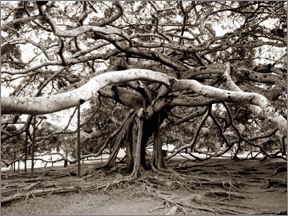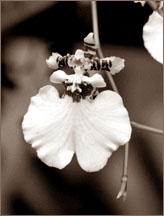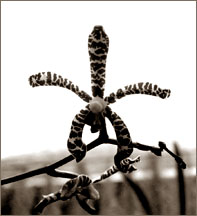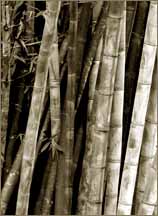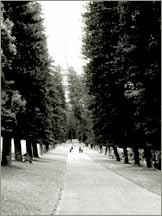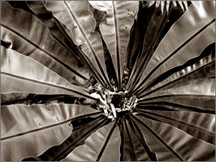|
observer |
|
|
|
|
|
OTHER LINKS |

|

|

|
Explore the plant lifeA visit to the Royal Botanical Gardens :
The sky was gloomy when I reached the main entrance of the Royal Botanical Gardens Peradeniya. The visitors thronged in front of the ticketing counter to get tickets. Most of the visitors were young couples who were eagerly waiting to enjoy the lushness of the garden. I visited Royal Botanical Gardens on third Sunday in January 2007 and I was really overwhelmed by its beauty and richness. Situated in the Hill capital Kandy, the Royal Botanical Gardens, Peradeniya occupies a horse-shoe shaped peninsula surrounded by the luxuriant wallows of the muddy Mahaweli River. The total area of 147 acres contains about 4,000 species. This beautiful garden has some 62 hectares in extent and is located at an altitude of 550 metres. Peradeniya takes its name from pera (guava) and deniya (plain), which would suggest an early connection with the introduction or the cultivation of fruits, as the guava is not indigenous to the island. The mean elevation above sea level is about 1,600ft. A visit to this garden will provide spectacles of extraordinary beauty and absorbing interest for any nature lover or casual visitor.
Situated 68 miles off-Colombo, 4 miles off Kandy this garden dates from the 14th century reign of King Vikrama Bahu III, who ascended the throne and kept court at Peradeniya near Mahaweli Ganga. Later, in the reign of King Kirti Sri Rajasinghe from 1747-1780 this was made a Royal Garden and from 1780-1798 King Rajadhi Rajasinghe resided therein, where a temporary residence was erected for him. Peradeniya is well known for its large variety of plants, ornaments and other creepers that produce the special spices of Sri Lanka. The great lawns highlight huge tropical trees and a variety at bamboo can be found in one place. In 1810 under the advice of Sir Joseph Banks a garden named Kew was opened in Slave Island and William Kerr was appointed as its superintendent. In 1813 the garden was moved to Kalutara for the reception of economic plants which could be cultivated there, on a large scale than was possible at Slave Island. Kerr died in 1814 and under the rule of his successor Alexander Moon this garden was finally moved to Peradeniya in 1821 as it was found to be favourable and better adapted for the proposed Botanic establishment. The transfer of exotics from the Kalutara Garden was made by successive superintendents at least up to 1843. During Moon's superintendency the opening of the Royal Botanical Garden Peradeniya can be said to have commenced though at first only the south west portion of the Garden was cleared and opened and planted mostly with cinnamon and coffee.
Moon published his "Catalogue of Ceylon Plants" in 1824 in which was given the Botanical and native names of 1,127 plants, indigenous to the island. In 1844 George Gardener was appointed as the superintendent. He died at Nuwara Eliya in 1849 and was succeeded by Dr. G. H. K. Thwaites who for over 30 years maintained the garden in a high state of efficiency added largely to our knowledge of the flora of the island and gave the establishment its world- reputation. When you proceed straight from the main entrance you can see the Great Lawn close to Monument Road. The most unique feature here is the Java Willow or Java Fig tree (Ficus Benjamina) which occupies the centre of the lawn like a giant living umbrella. The ground covered by its enormous spread is about 2,500 sq.m. The lake is situated in the South Drive to the left of the Main entrance. The margin of the lake is planted with marsh plants. The bamboo collection is along River Drive to the right of the lake. The giant bamboo of Burma (Dendrocalamus giganteus) is the largest known in the world. The stems attain a height of 30-40m and upto 20-25 cm in diametre. The average growth rate of new shoots is about 30 cm a day.
There are three magnificent palm avenues, the cabbage Palm Avenue (Roystonia oleracea) flanks the river Drive, the palms, this avenue are over 21 m in height, the Palmyra Palm Avenue (Borassus flabellifer) which joins the flower garden with River Drive and the Royal Palm Avenue along the main central Drive. The flower garden, near the orchid house, is laid out with beds of flowering annuals and perennials. The most striking feature here is the ribbon border of showy coleus varieties traversed by a path which leads into an octagonal conservatory. Here may be found a collection of shade -loving plants. The best known attraction of the garden is the orchid house situated close to the main entrance, which houses more than 400 varieties of exquisite orchids. Around the Orchid House may be seen several hardy tropical orchids including the largest orchid in the world which produces flowers spikes up to 2.5 m long and the green orchid. A spice garden gives you a first-hand introduction to the trees and plants used for the traditional Ayurvedic medicine. Mahaweli river, Sri Lanka's longest river surrounding this garden gives added beauty to the garden. It won't be wrong to say that this garden is one of the best in the world and the best in Asia. |
||||||||||
